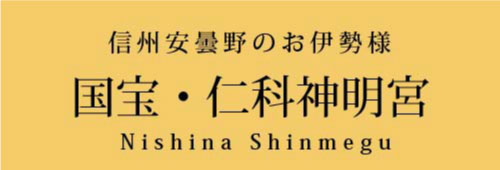
 National Treasure and "Shikinen Sengu"
National Treasure and "Shikinen Sengu"
Shinto does not make idols in the shape of the Shinto god, called "Kami". Rather than concrete beings that people can see, Japanese deities are enshrined in the main shrine as the omnipotent beings in invisible form. Honden, the main shrine stands at the far end of the path, and Chumon, the middle shrine, and Haiden, the worship hall, are in front of it. The place to pray is called Shinmon. When you pray, make an offering of money to Kami in front of the Shinmon, bow twice, clap your hands twice, pray, and then bow once again.
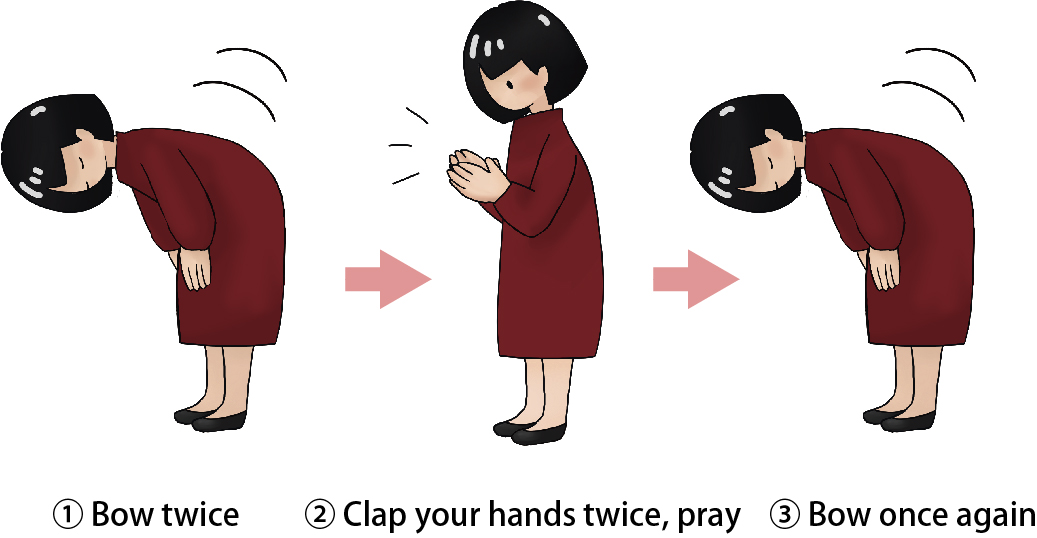
After praying, visit Honden, Chumon, and Tsuriya, which are designated as National Treasure. There are stairs leading up to the Honden on either side of Shinden, and you can choose either one to see.
Honden of Nishina Shinmeigu Shrine was built in the ancient Japanese Shinmeizukuri style, characterized by the building process of using plain woods in rectilinear patterns which gives an impression of rustic beauty. It is believed that the ancient Takayukashikisoko, warehouse on stilts, was developed into a palace style, and the architectural style of 2,000 years ago has been handed down to the present.
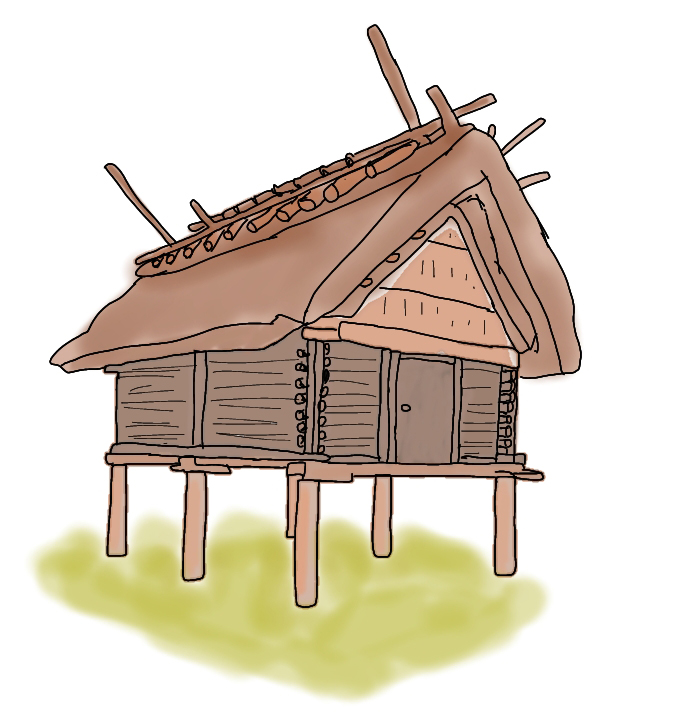
Image of Takayukashikisoko (warehouse on stilts)
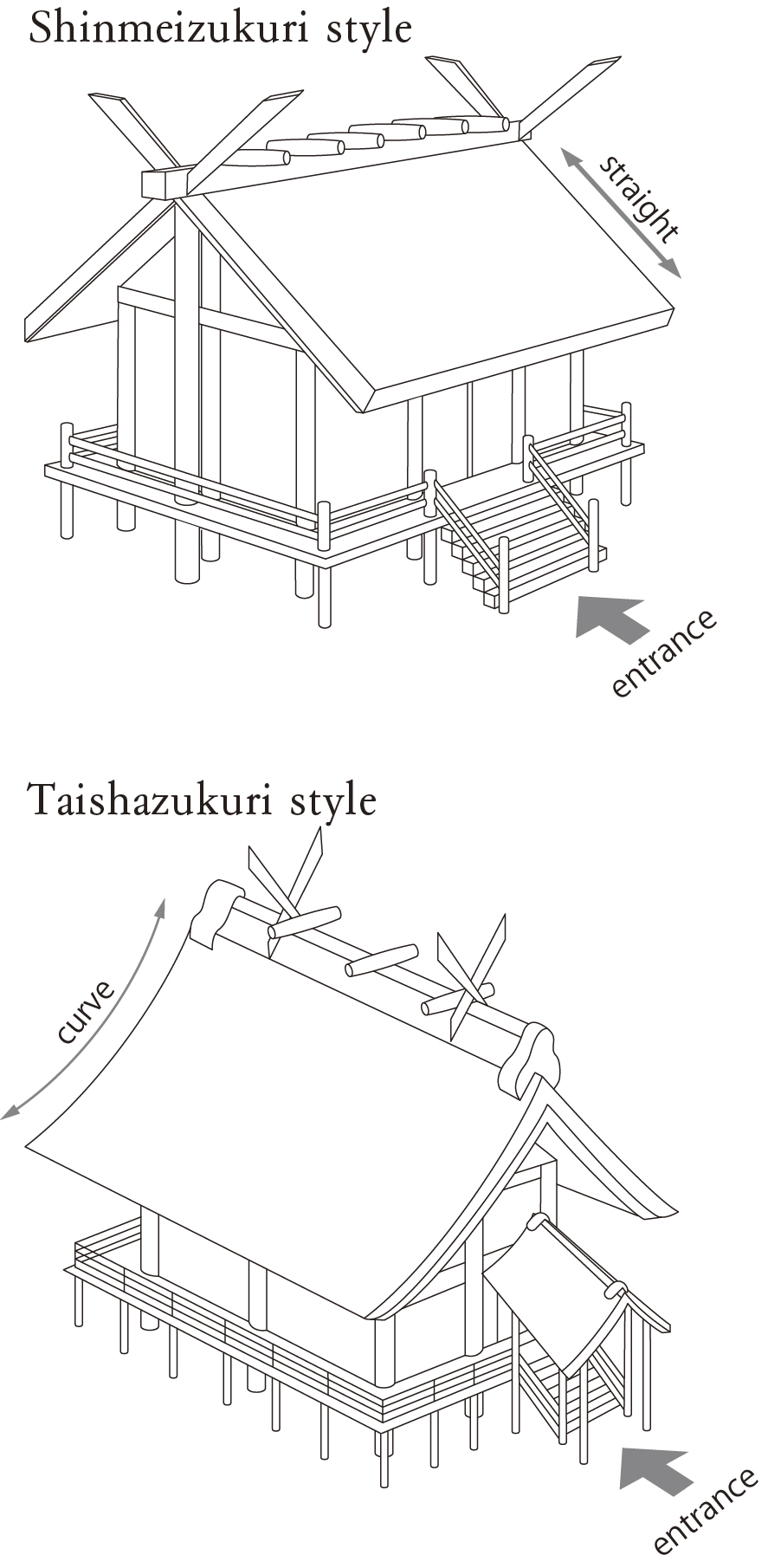
Comparison between Shinmeizukuri style and Taishazukuri style
Following the ceremonial customs of Ise Jingu Shrine, which is called "Shikinen-Sengu", every 20 years, Nishina Shinmeigu Shrine also holds the ceremony. Nishina family, who ruled the area, conducted the ceremony in the past, but after the rebuilding in 1636, it was only partially repaired. Therefore, the building structure is designated as the National Treasure as "the oldest Shinmeizukuri in Japan" that retains its ancient style.
Today, the shrine is repaired every 20 years, using the traditional Japanese construction methods, and this provides an opportunity to pass on the techniques. The roof, designated as the National Treasure, is made of "Hiwadabuki", the process of thatching with many layers of Japanese cypress. The roof of Shinmon is made of "Kokerabuki", which is the process of thatching with thin Sawara woods.
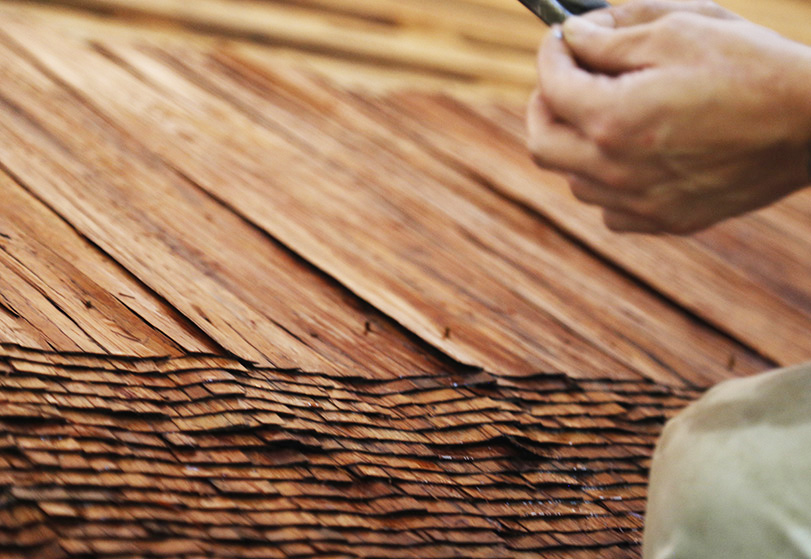
Hiwadabuki
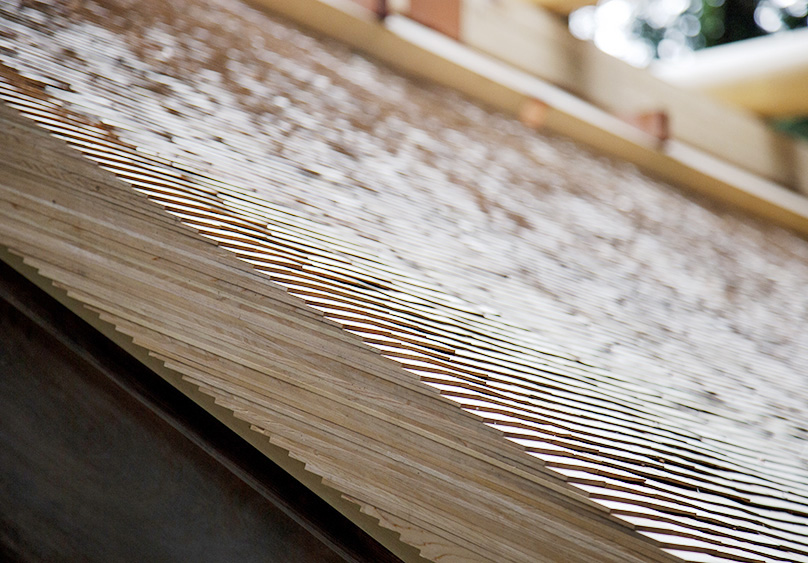
Kokerabuki
Around May, before the construction of the main shrine begins, the deity is moved to a temporary shrine. Then, repair of the roof, replacement of the layers of Japanese cypress, and repair of the foundation and the hedge are conducted. When all the work is finished, the deity is returned to the main shrine. This ceremony of return is called "Seisenzasai" and is a fantastic ritual that takes place at midnight in November.

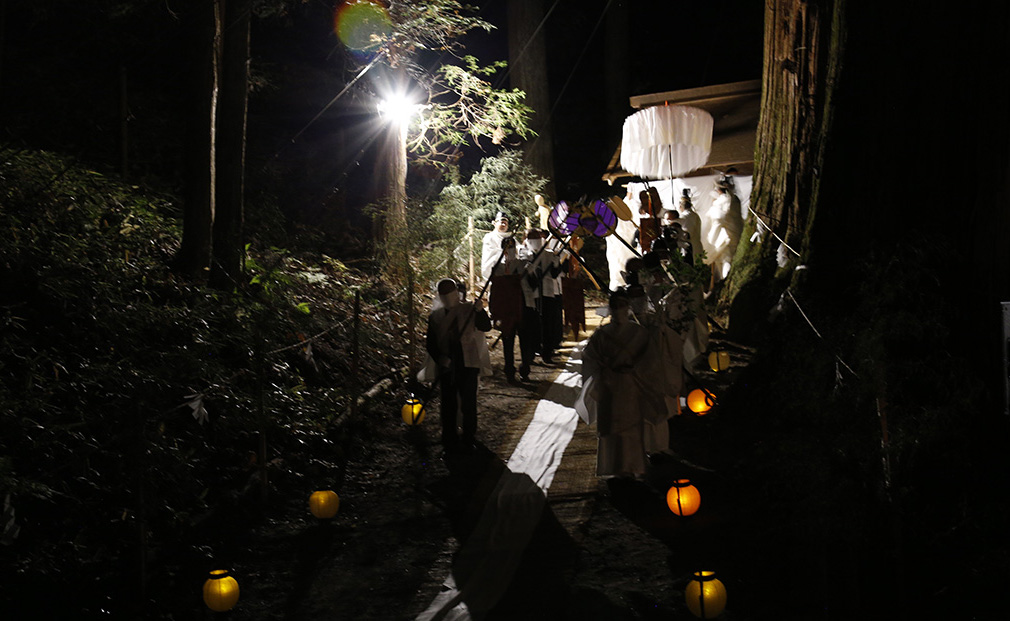
"Seisenzasai" Ceremony




